For years, I’ve suspected the morning after the fire at the Packard Sawmill in Twin Peaks episode 2.001 was actual footage from a real fire that destroyed part of the Weyerhaeuser Sawmill in Snoqualmie, Washington in Feb. 1989. Thanks to a post on the Snoqualmie Valley Historical Museum Facebook page, I have confirmed my suspicions with photographic evidence! Let’s take a look at how the fictional world of David Lynch and Mark Frost’s show intersected with the “Real Twin Peaks” in Washington state.
WHERE IS THE MORNING AFTER THE MILL FIRE SCENE LOCATED?
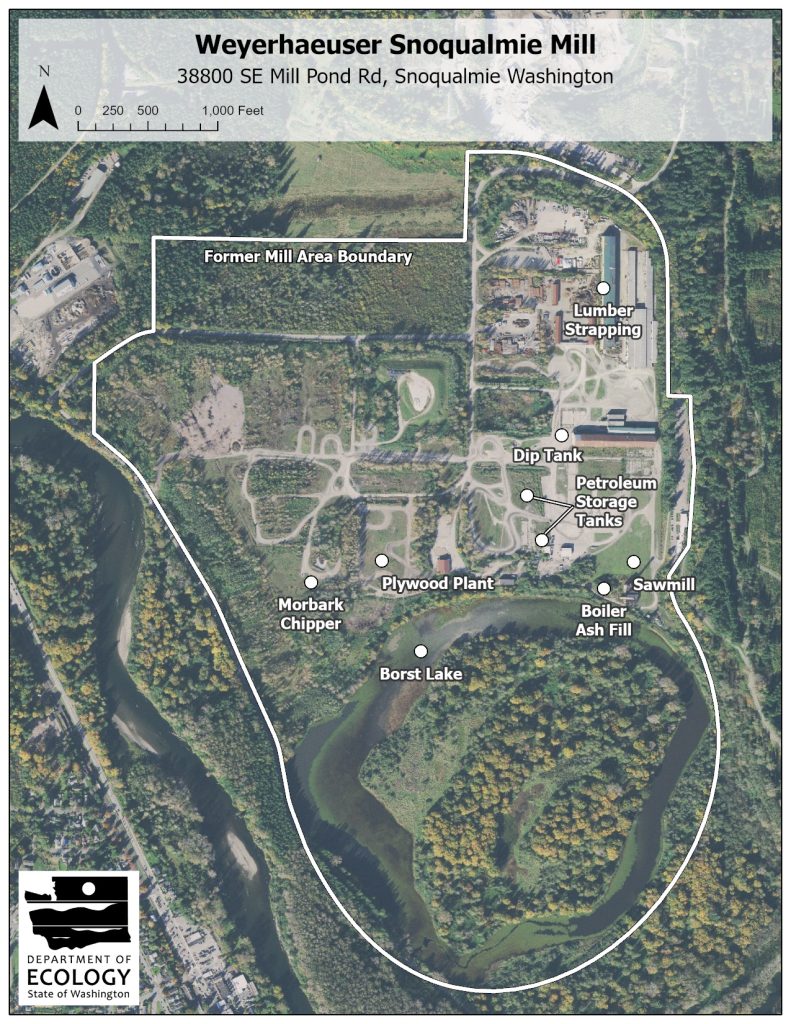
The morning after the mill fire scenes were captured at the former Weyerhaeuser Sawmill (formerly known as the Snoqualmie Falls Lumber Company) in Snoqualmie, Washington. Today, the location is home to Dirtfish Rally School located at 7001 396th Dr SE. There isn’t much left of the sawmill aside from parts of Mill 1 that includes a smoke stack and a brick building.
The map above is from the State of Washington – Department of Ecology. The Plywood Plant was located near Borst Lake toward the back of the property.
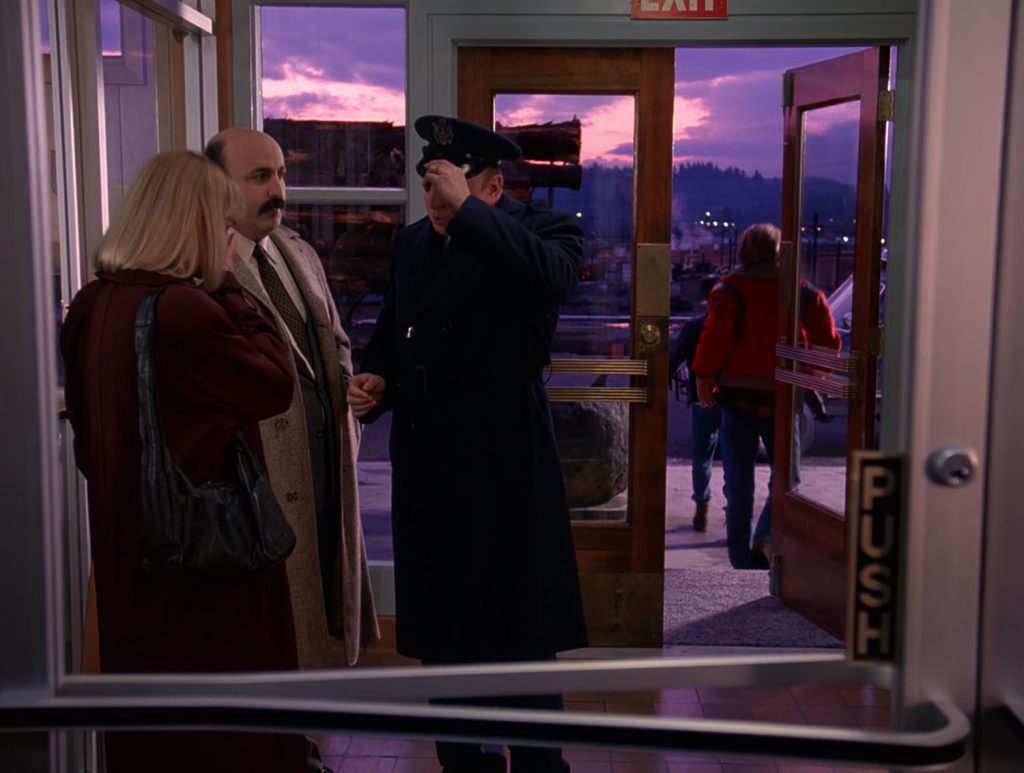
There was one massive structure once located on rally school’s dirt track – a 120,000-square-foot plywood plant. You can catch a glimpse of remains of the plant in the Twin Peaks pilot as Bobby Briggs and Mike Nelson leave the Twin Peaks Sheriff’s Department.
Mill #1 served as the iconic Packard Sawmill while the Weyerhaeuser administrative building was the Twin Peaks Sheriff’s Department.
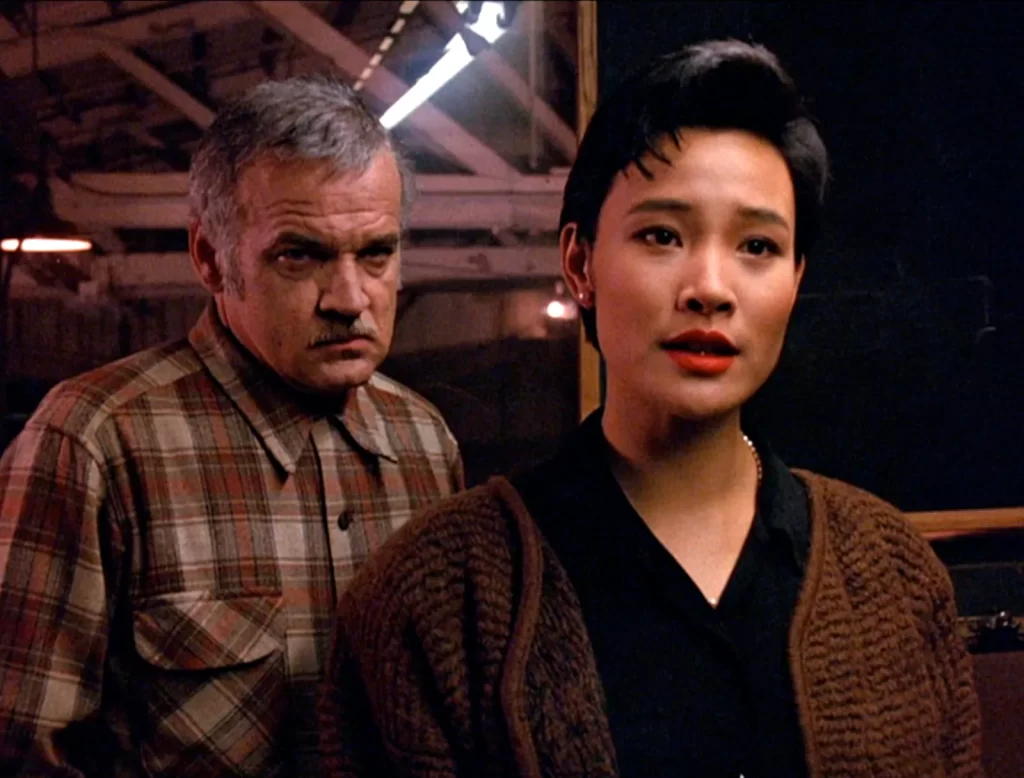
Other interior scenes from the Packard Sawmill were captured inside Mill #1 which is different than the Plywood Plant.
BRIEF HISTORY OF THE MILL SITE
Snoqualmie Falls Lumber Company cut its first log at the second all-electric lumber mill in the United States opened in 1917.
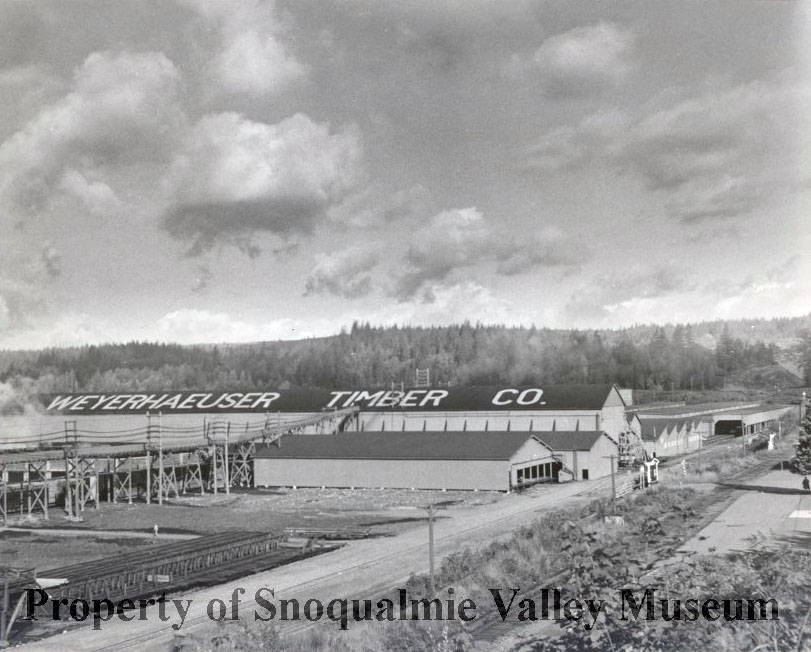
It was more than just a sawmill as the company established the town of Snoqualmie Falls located across the river and up a hill from Snoqualmie. At its peak, the mill town included 250 homes, a hotel, community center, 50-bed hospital, barber shop, grade school, boarding house for single men and eight bunkhouses built for Japanese workers.
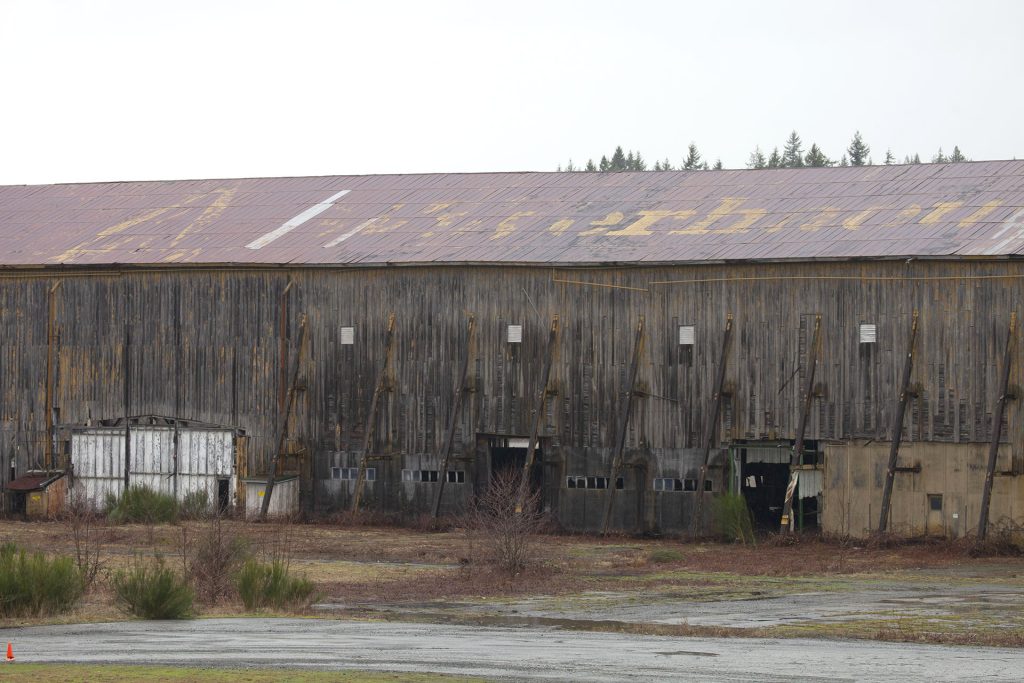
In 1948, Weyerhaeuser acquired the Snoqualmie Falls Lumber Company and operated the mill as the Weyerhaeuser Timber Company. The drying shed with the company’s name still stands today at the Dirtfish site.
Ten years later, the company disbanded the town of Snoqualmie Falls and moved 90 homes to other spots across the Snoqualmie River. Some of those homes once stood along the Sycamore tree-lined street seen as Laura Palmer drives to Harold Smith’s house in Twin Peaks: Fire Walk With Me.
Weyerhaeuser operated two mills on the site until 1961 when Mill #2 closed just a few years after they opened a plywood plant in 1959. Operations continued for decades that followed until May 5, 1988 when Weyerhaeuser announced the Snoqualmie Mill would close permanently sometime between February and April 1989. Little did the company know at the time of the announcement that February 1989 would be a fateful day in the Snoqualmie Mill’s history.
THE WEYERHAEUSER PLYWOOD PLANT IN SNOQUALMIE
Ten years after Weyerhaeuser acquired Snoqualmie Falls Lumber Company they dropped the word “Timber” from their name on Sept. 1, 1959.

Then company president F.K. Weyerhaeuser said times had changed since they were founded 60 years ago. The name change was a result of the company branching into new products beyond the business of managing timberland. A month later on Oct. 1, Weyerhaeuser Sales Co. operations became a part of the lumber and plywood division.
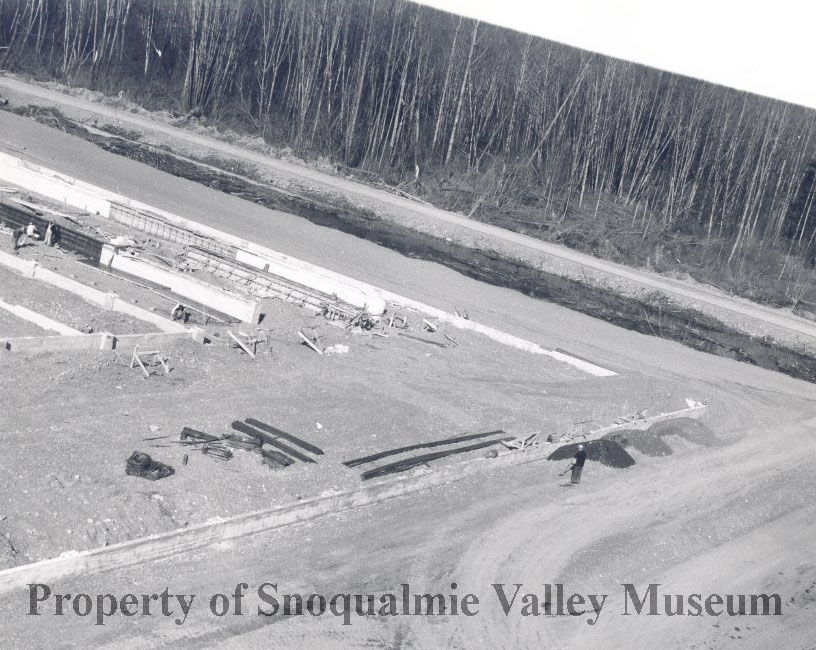
Earlier that year in January, Weyerhaeuser began construction on a new plywood plant at the Snoqualmie Mill site. This photo above from February 24, 1959 (selected due to the iconic date in Twin Peaks history) shows early foundations for the plant.
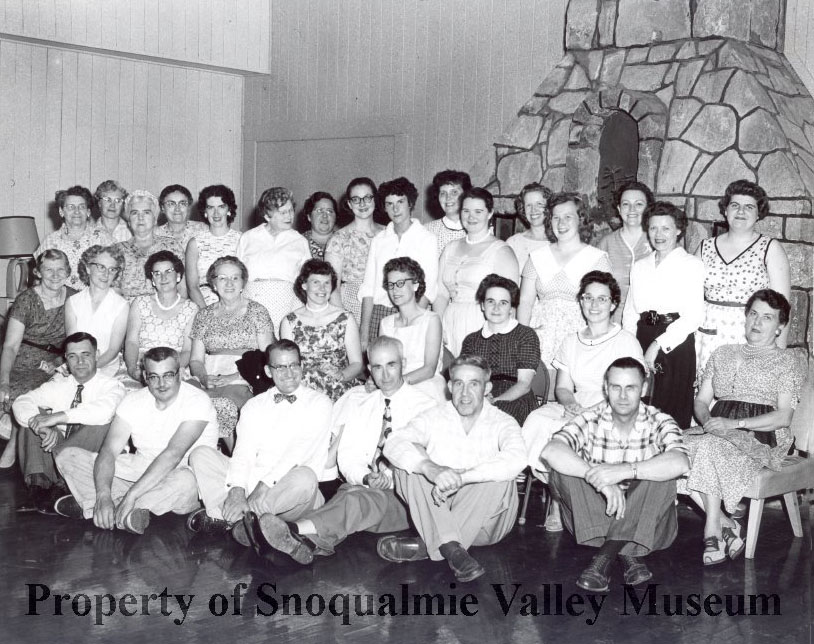
By July 1959, the plant was nearing completion which meant increased employment for the major industry in Snoqualmie Valley. Harry E. Morgan, Jr., the Snoqualmie branch manager at the time, said employment increased from “630 to 775 men” and their annual payroll would increase from “$3.5 million to $4.25 million.”
On July 15 at 7:00 p.m., a company dinner was held at Si View Hall in North Bend, Washington celebrating the new plant. Admission was $3.00 for the event sponsored by the Snoqualmie Valley Civic Association.
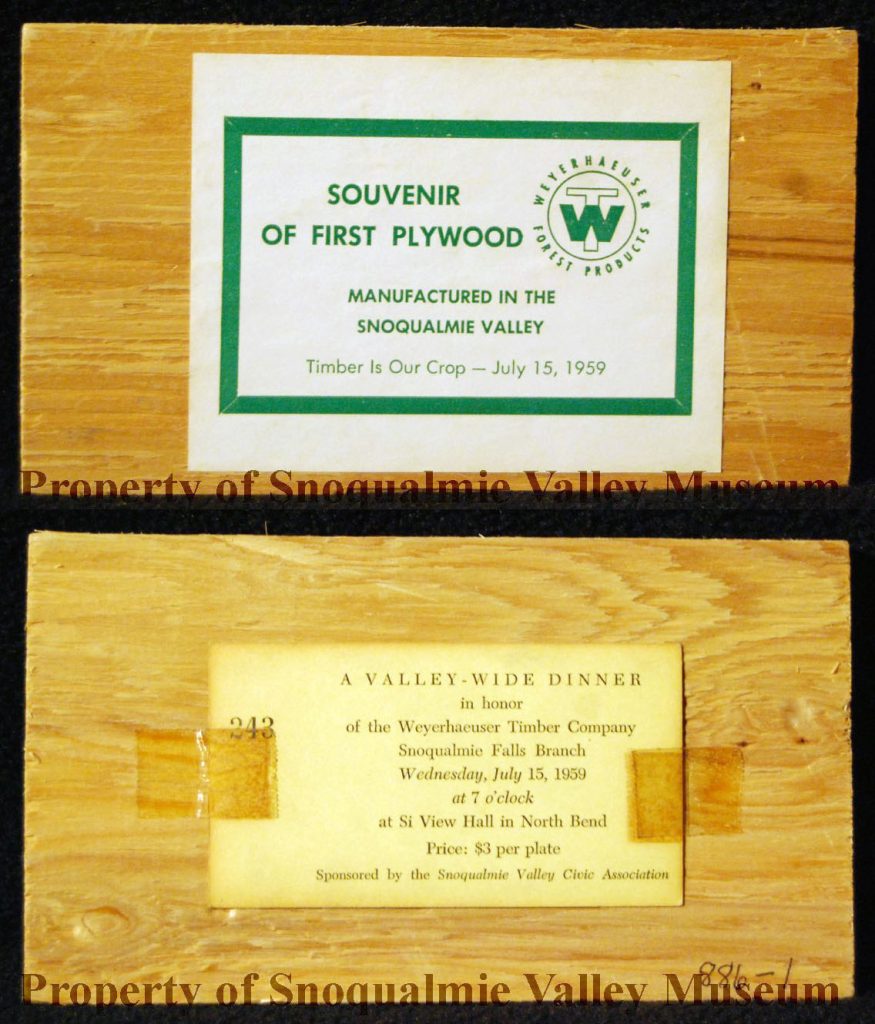
Attendees received this commemorative souvenir of the first plywood created at the new Snoqualmie facility.
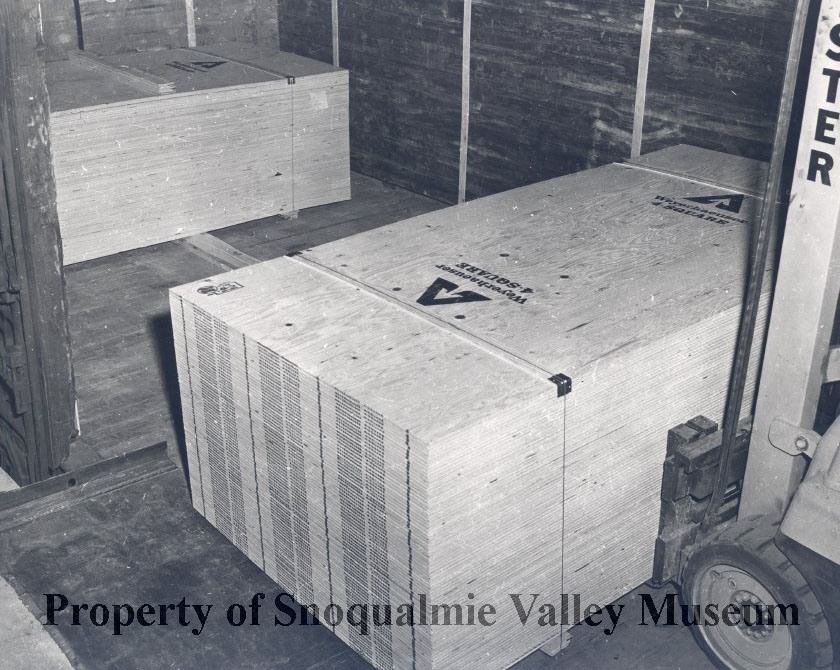
By August 12, the plant was fully operational with Cloy L. Archer serving as superintendent. Using western softwood trees, they would produce 60 million feet of plywood per year on a 3/8-inch basis (the number would eventually grow to 90 million). Weyerhaeuser’s other plants in the Pacific Northwest used Douglas fir trees to create plywood.
Manager Morgan told “The World” on Aug. 12 the new plywood products has, “appearance advantages of light-colored, tight-knotted wood while retaining adequate strength properties.”
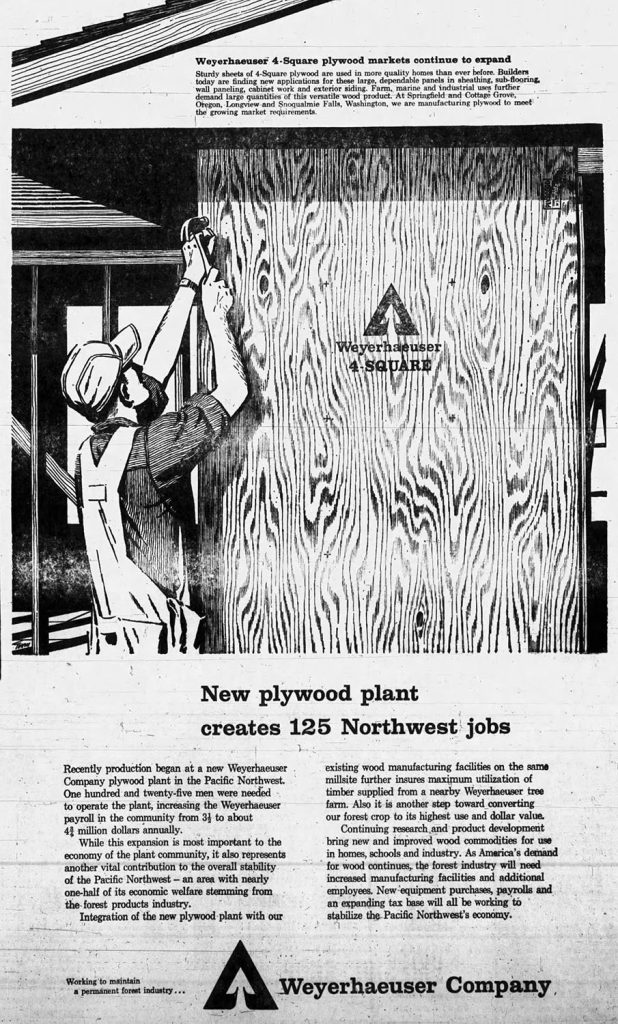
The company ran an advertisement in The Daily Herald from Everett, Washington that fall discussing the economic impact the new plywood plant would have on “Northwest jobs.” The lumber industry would continue dominating the Pacific Northwest until the late 1980s and early 1990s.
FIRE AT THE SNOQUALMIE PLYWOOD PLANT ON FEBRUARY 5, 1989
After the company had announced in May 1988 that the Snoqualmie plant would be closing, the unthinkable happened one fateful night on February 5, 1989. As the mill was preparing to come back online on Sunday night, a fire broke out in the plywood plant around 7:00 p.m. The flames were first noticed by mill security personnel.
It was thought that the fire started from overheating of an exhaust fan for the plant’s veneer dryers according to a Snoqualmie Valley Record, February 13, 2014. Facility sprinklers never turned on to douse the flames.
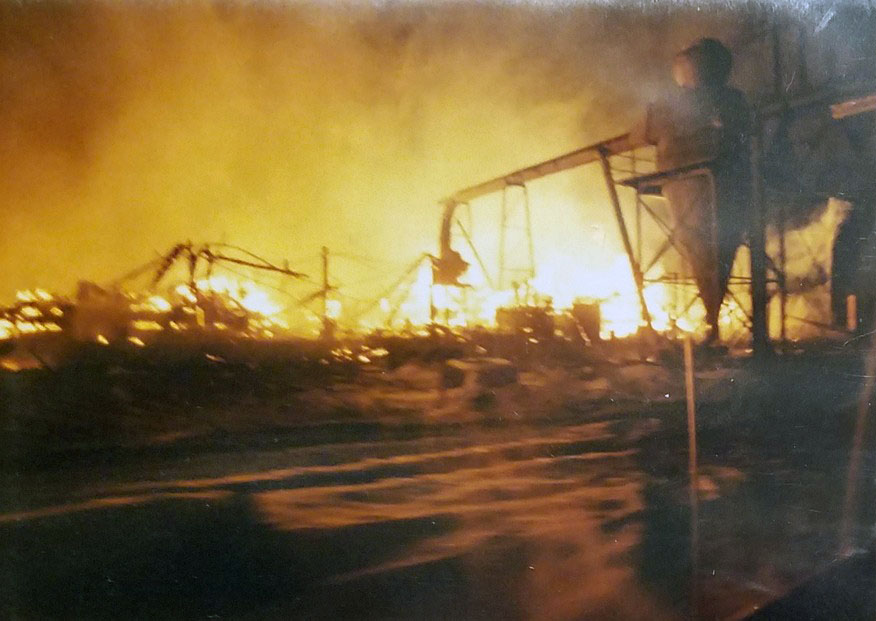
The weather in Washington state during February 1989 was bitterly cold. The Twin Peaks cast and crew mentioned this fact in interviews years later as location filming took place in Snoqualmie Valley and Washington state between February 21 through March 20 that year.
In fact, frozen water lines had prompted the closing of the Snoqualmie Mill on Friday, Feb. 3 Tuesday, January 31.

Frozen water would hinder firefighting efforts. Once the fire ignited, it spread quickly throughout the plywood mill. There were approximately 35 to 40 firefighters who arrived on the scene, but they were unable to use the three closest fire hydrants as the lines were completely frozen. The only water available was brought to the site by tanker. Fifteen pieces of firefighting equipment arrived from nearby cities of Issaquah, North Bend, Fall City, Carnation, and District 10 Firefighters of King County.
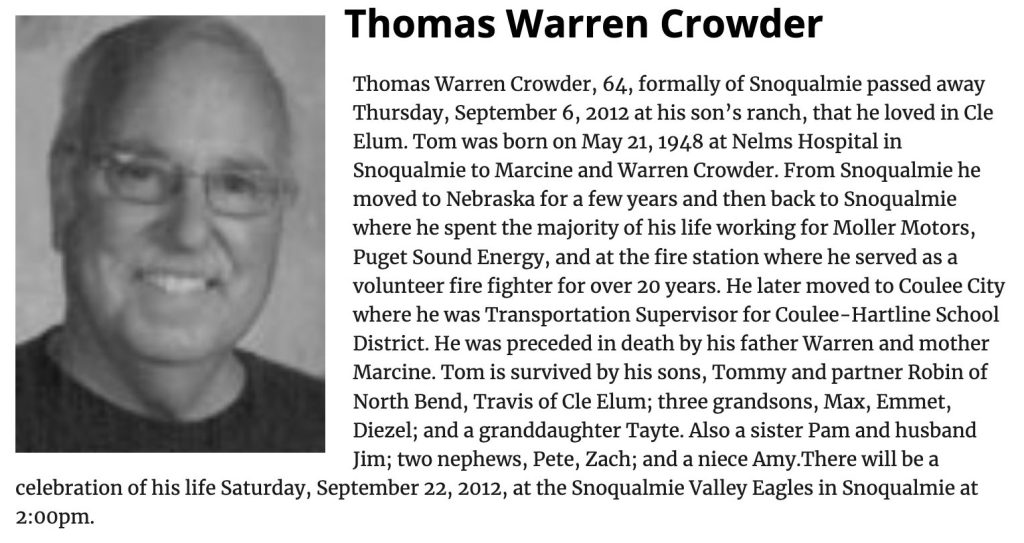
Captain Tom Crowder, a volunteer firefighter for more than 20 years, said all his crew could do was “protect the outlying buildings” from catching fire. As an aside, Tom would continue living in Washington state until his passing on September 6, 2012.
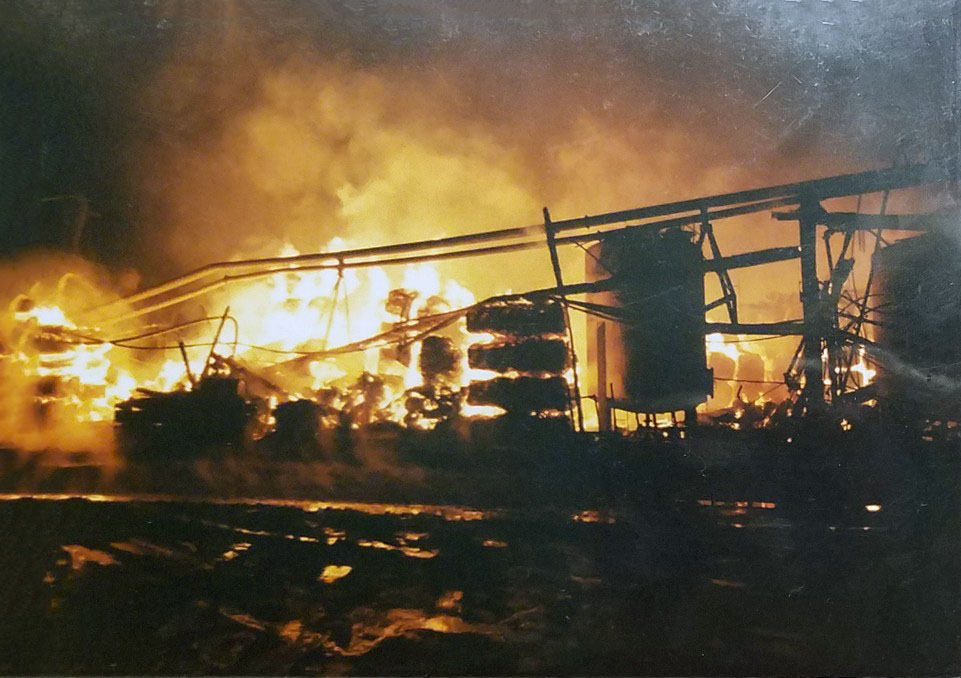
It was reported the orange glow from the flames could be seen throughout the region. Firefighters and Weyerhaeuser employees could only stand back and watch the plywood burn.
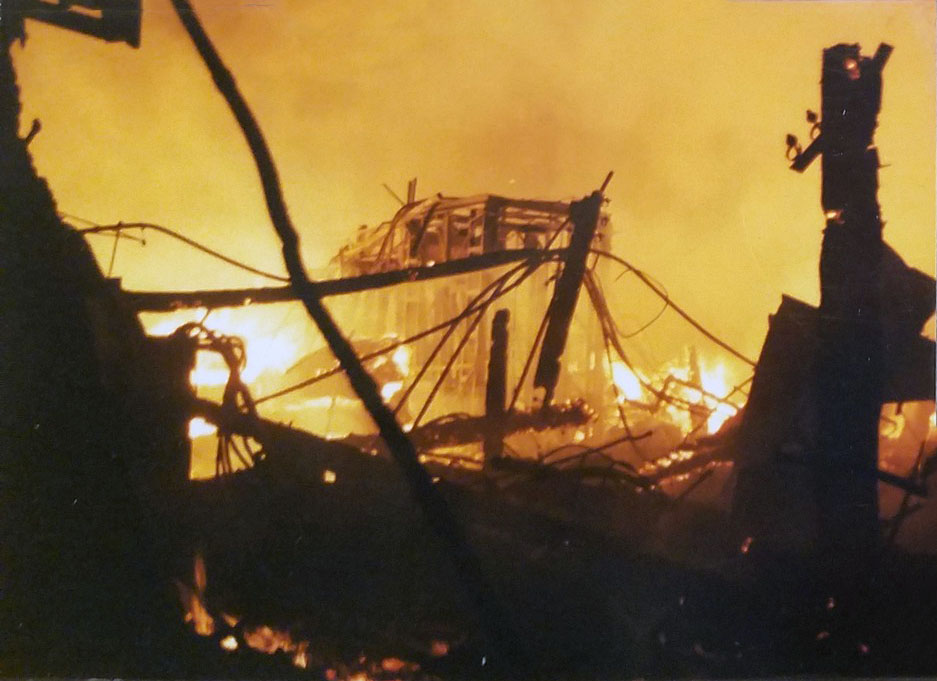
I discovered these photos by “Les Diana Renfro” on the Facebook page for Snoqualmie Valley Historical Museum. Other folks commented on the photos, such as Morgan Pearlman Pearl who said of the fire, “I remember seeing a bunch of fire and smoke in the distance. I grew up camping and to me it looked like the biggest bonfire I ever saw off in the distance.”
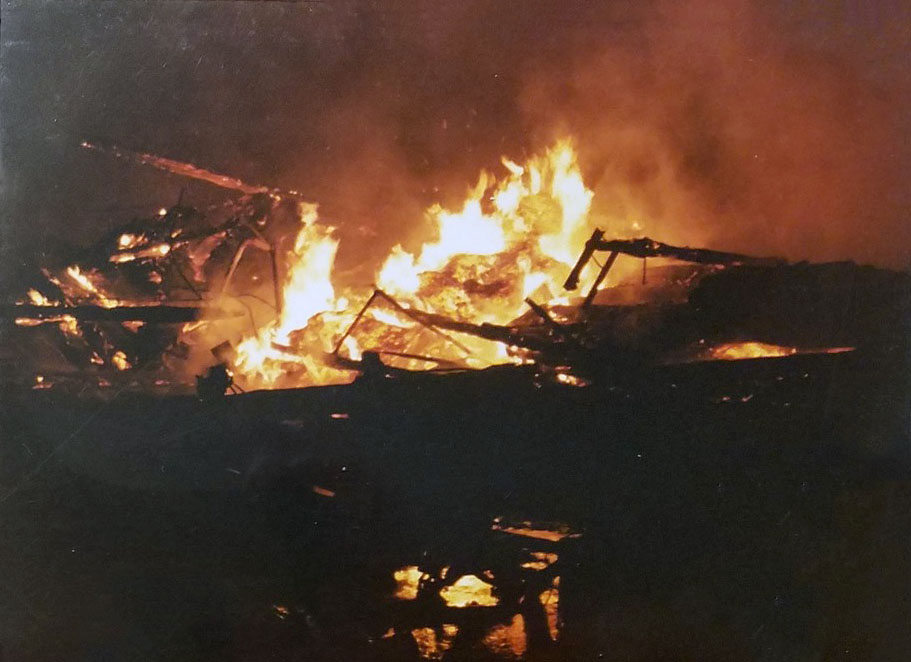
Steve Thoreson remembered the night:
“I drove over and watched it just go up in flames. We will never know the full story, as the dryer that caught on fire had been padlocked because it was known it would catch on fire. Odd set of circumstances in that fire, as well as the timing of frozen waterlines, lines that were supposed to he kept dry, were wet and frozen. ”
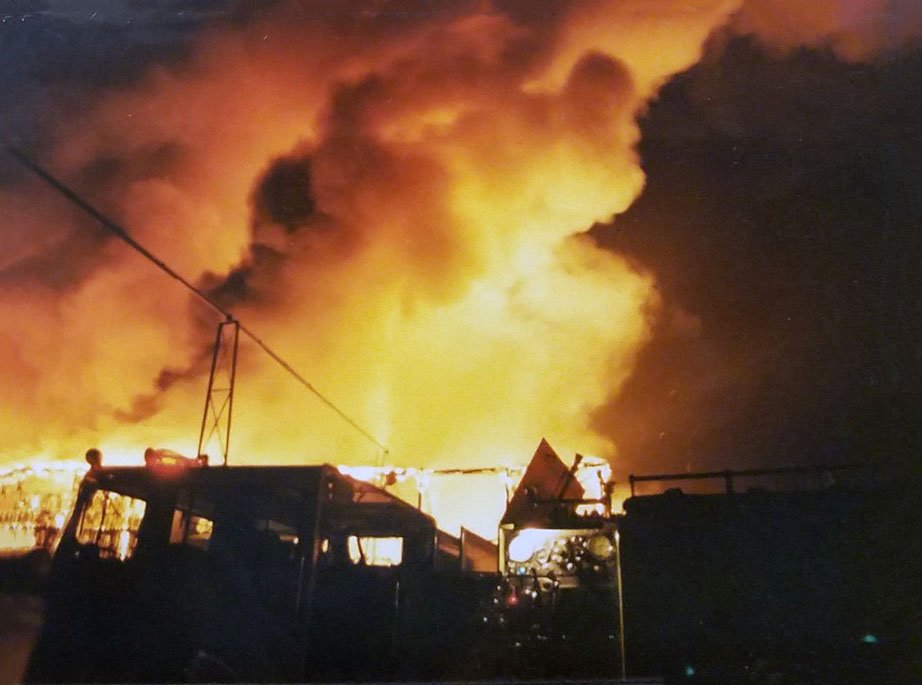
Smoke and flames filled the night sky. Les Diana he could could “see the glow from the fire, in the sky from the bottom of Falls hill where we lived (across from Tokul Creek Road).”
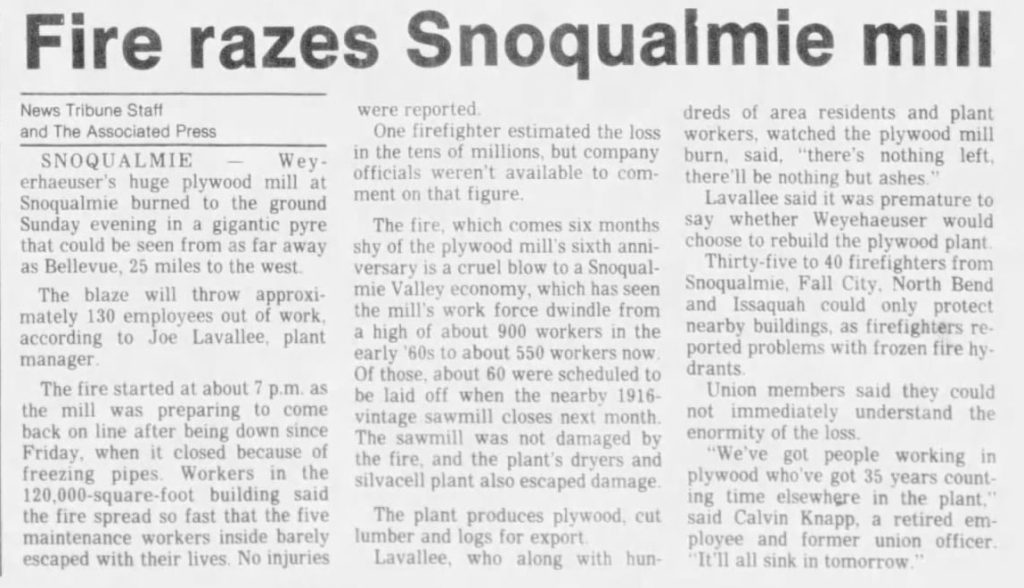
The News Tribune reported on Feb. 6 the fire could be seen as far as Bellevue, 25 miles to the west of Snoqualmie. Thankfully no one was killed or injured by the fire. It spread so quickly, however, that five maintenance workers almost didn’t escape in time.
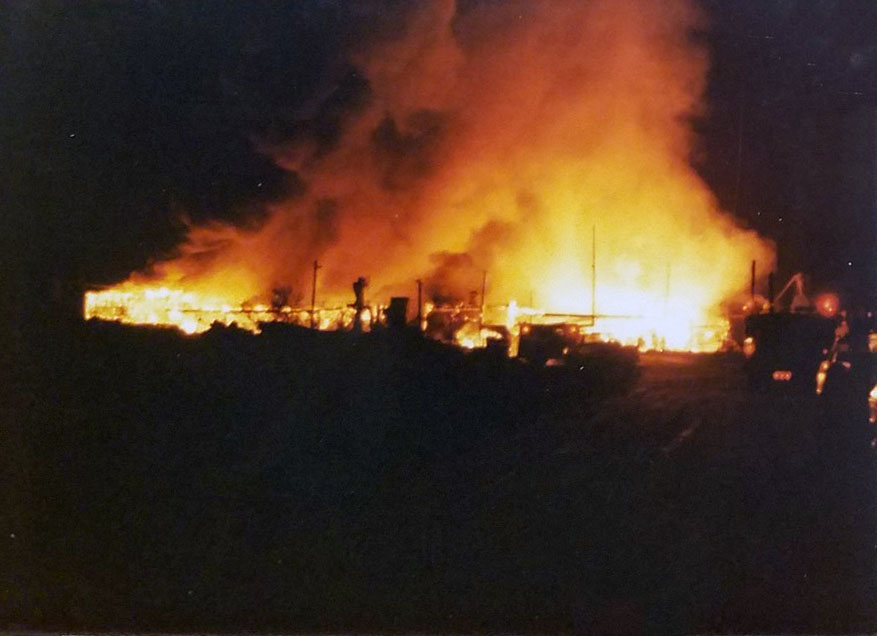
Joe Lavallee, the plywood plant’s manager, said while watching the intense flames dance across the mill site, “…there’s nothing left, there’ll be nothing but ashes.” These photos of the fire are priceless as they capture a significant moment in Snoqualmie Valley history.
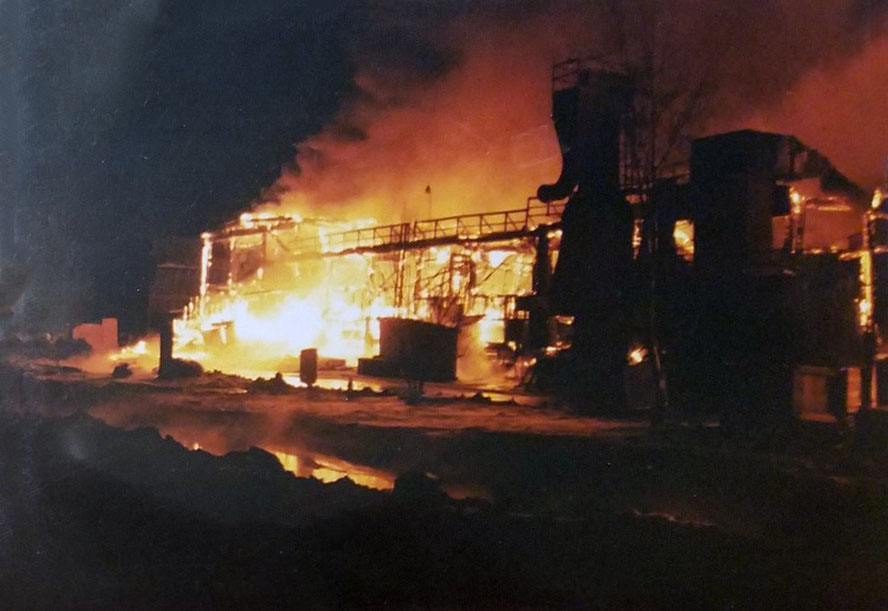
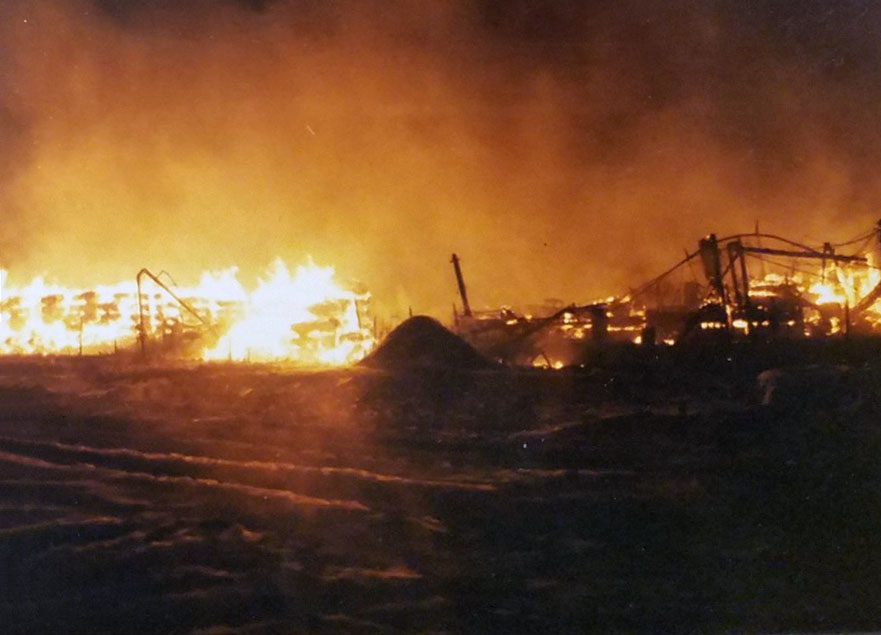
MORNING AFTER THE SNOQUALMIE PLYWOOD PLANT FIRE ON FEBRUARY 6, 1989
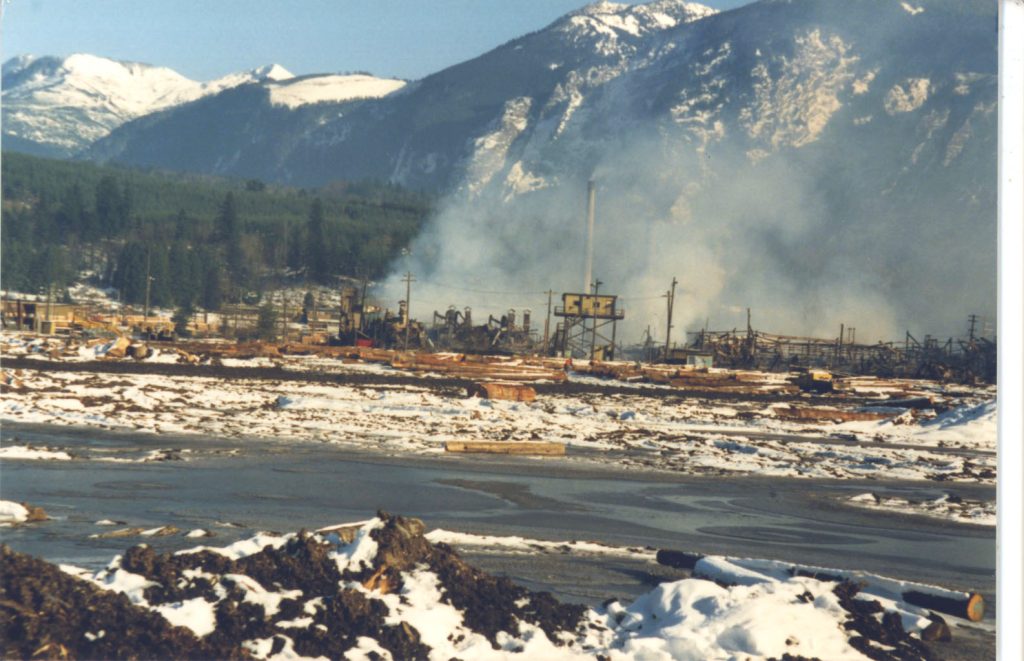
As the sun rose over Mount Si, reality set in. The plywood plant was completely destroyed.
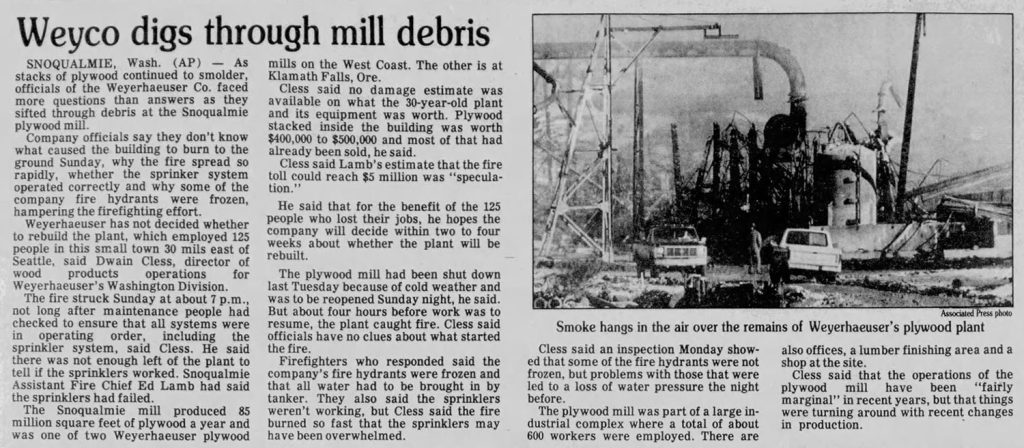
Dawin Cless, director of wood products operations for Weyerhaeuser’s Washington division, told the Associated Press that an inspection on Monday showed that “some of the fire hydrants were not frozen, but those that were led to a loss of water pressure the night before.” He confirmed the sprinklers weren’t functioning properly but assumed even if they were working, the fast-moving fire would have overwhelmed the system.
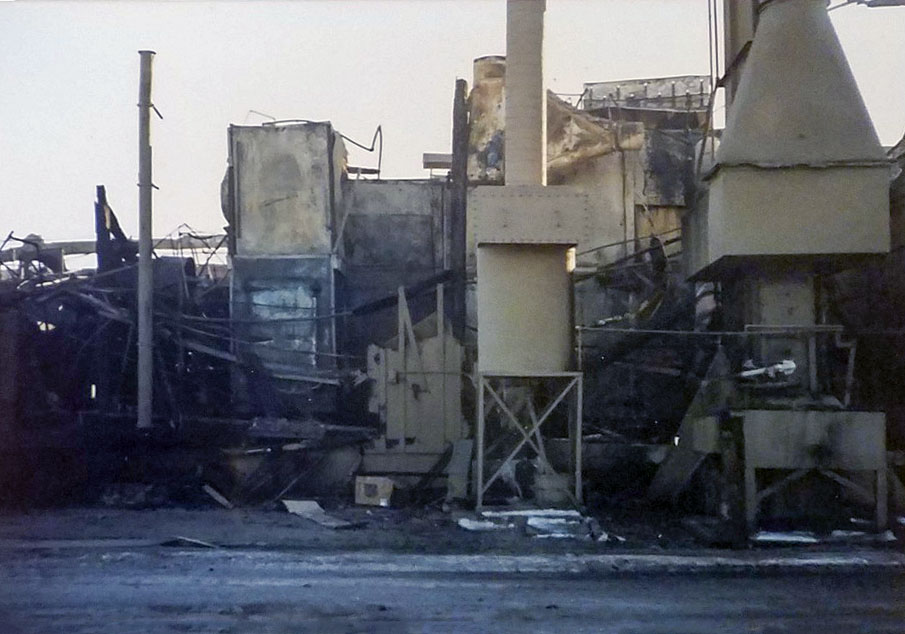
Only charred, twisted metal remained of the plant that was producing plywood used throughout Puget Sound. That morning, Cless share with the Associated Press the company would decide within two-to-four weeks if they would rebuild the plant. But those plans never moved forward.
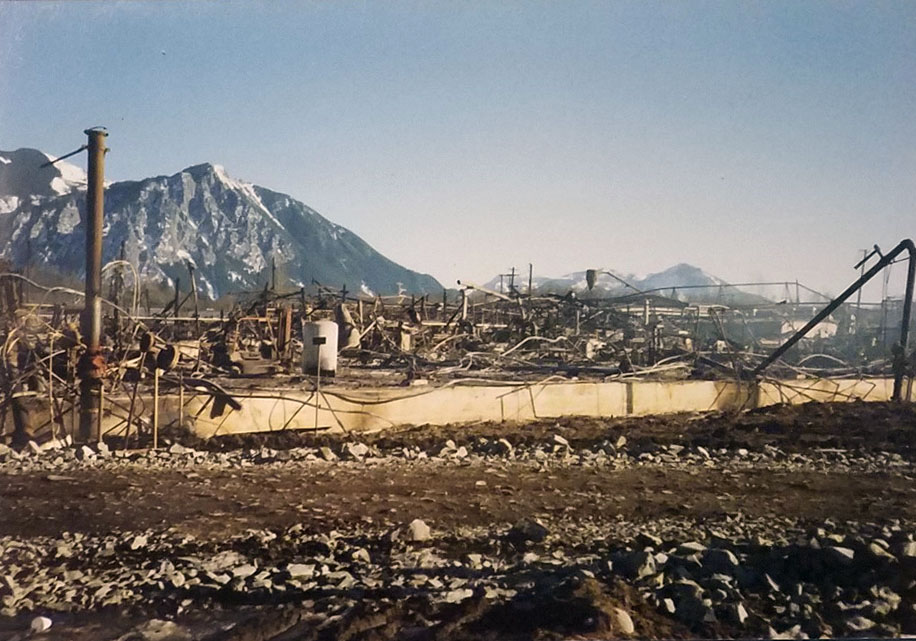
Thankfully, the sawmill, the plant’s dryers and silvacell plant were not damaged. The blaze decimated the $2 million mill, $600,000 in stacked wood and three cars parked on the site. The fire also put 130 workers out of a job. Weyerhaeuser was already planning to close the mill by April but the fire escalated that timeline.

By April 1989, the 200 workers displaced by the Snoqualmie Mill closure were eligible for job retraining program being run by Marpac, a “Seattle-based jobs program agency in conjunction with the Seattle Master Builders Association.” Washington state funded the program which offered workers up to 18 weeks of paid on-the-job training. The state would reimburse companies who employed the former mill workers for “50 percent of the workers’ wages during the training period.”
THE MORNING AFTER THE MILL FIRE IN TWIN PEAKS
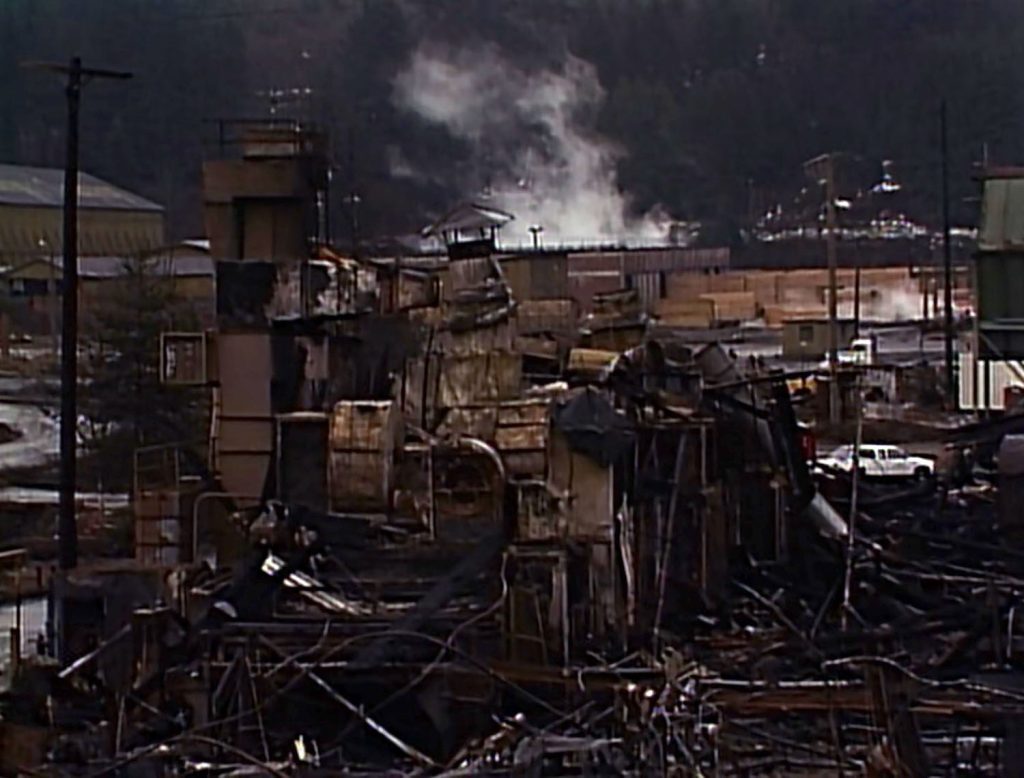
Video footage is show of the mill fire in the second season opener of Lynch and Frost’s show. This footage was captured from the back of the property facing the Twin Peaks Sheriff’s Department building. If you look to the left, you can see part of the drying shed previously shown in this story.
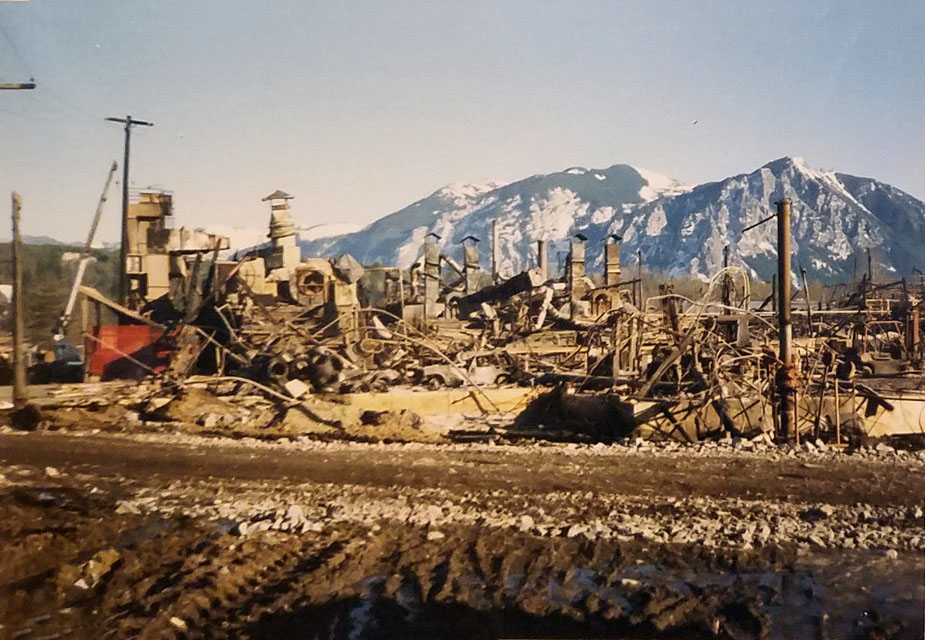
You can see that pointed tower on the left side of the image that appears to match the tower found in the episode. A snow-covered Mount Si looms in the distance.
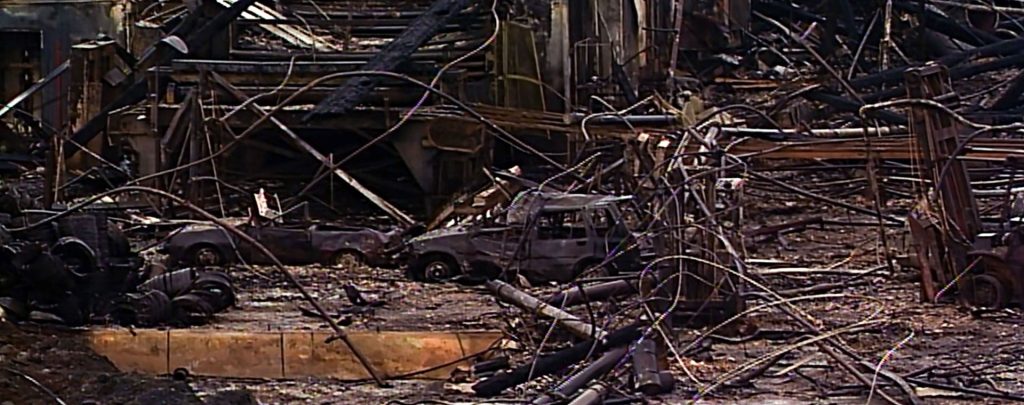
There is a slow pan from left to right that follows the establishing shot. I combined images from that panning shot into this panoramic image. You can see two of three damaged cars in the wreckage.
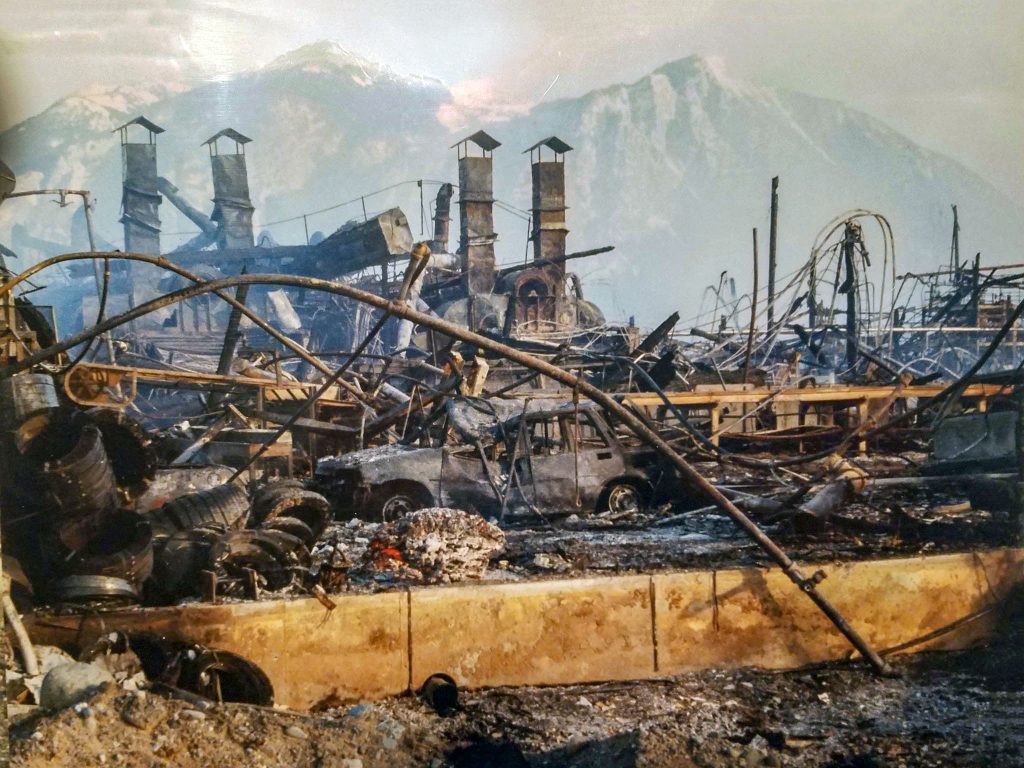
As it turns out, one of those cars – a Honda Civic – was owned by Les Diana Renfro! It was eventually replaced with another and Weyerhaeuser replaced tools lost in the fire. Renfro said millwrights had to purchase their own tools at the time (which were not inexpensive!).
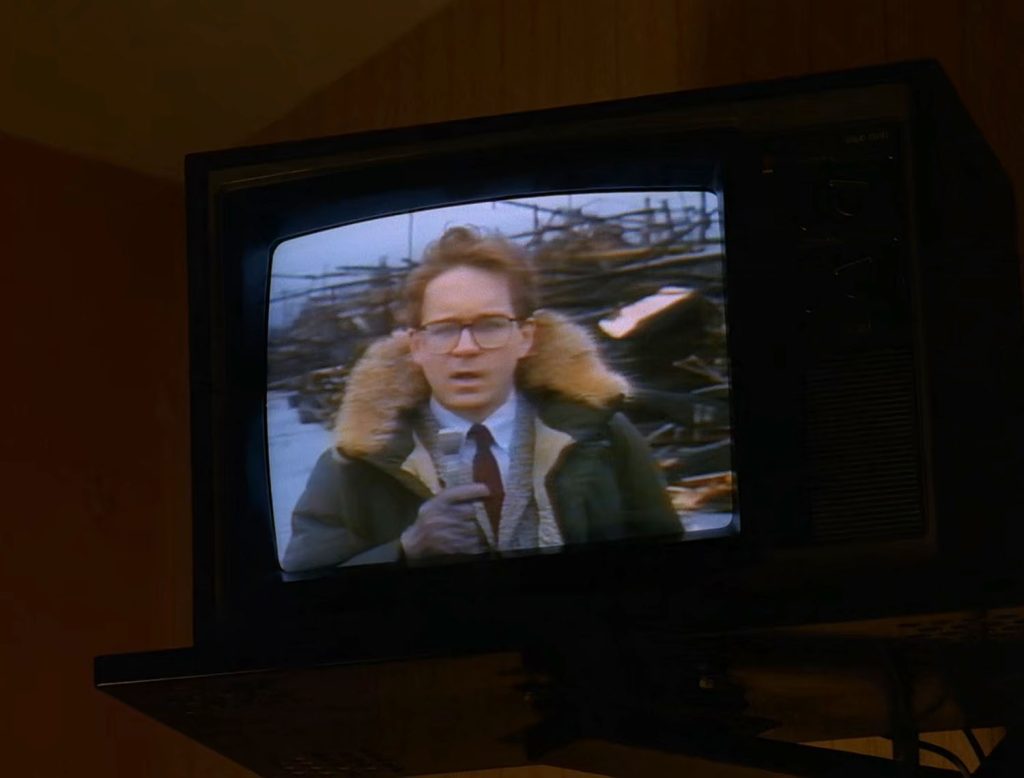
Reporter Cyril Pons (played by Mark Frost) would be seen reporting from the mill fire site which could have been shot when the crew was at the Sheriff’s station building around February 25-27, 1989.

Lynch and Frost were at the location together during filming of the Sheriff’s Station scenes.
But one thing has bothered me as the quality of the footage doesn’t match the rest of the episode. It seems like it was shot on video. Even in high-definition, the video quality appears slightly grainy.
One reason could be was because it was from a video. Michael Williams who commented on that Snoqualmie Valley Museum Facebook post, said, “I videotaped that!” He worked in the lumber dry kilns when the plant burned down. He explained that “Snoqualmie fire chief (Frank Web [sic]) browed it. It is on a VHS video. Never was able to track it down after that.”

Frank Webb worked at Weyerhaeuser as an hourly supervisor and volunteered at the Snoqualmie Fire Department. He also worked as an EMT for 18 years and volunteered with the Snoqualmie police too. We may never know If Frank borrowed the VHS and provided it to the Twin Peaks crew as he passed on May 9, 2024 at the age of 82.
It could explain, however, how the footage contained smoldering smoke from the recent fire. By the time the Twin Peaks crew got to the location a few at the end of February, it’s highly doubtful the smoke would still be floating above the site.
The fire at the mill changed the trajectory of Snoqualmie Valley. This moment is forever immortalized in David Lynch and Mark Frost’s wonderful and strange show.
Special thank you to Snoqualmie Valley Historical Museum, Les Diana Renfro and other commenters on that Facebook post. The Historical Museum does incredible work preserving the history of Snoqualmie Valley. Please consider donating to help them preserve and share the history so present and future generations can understand our past.
Discover more from TWIN PEAKS BLOG
Subscribe to get the latest posts sent to your email.

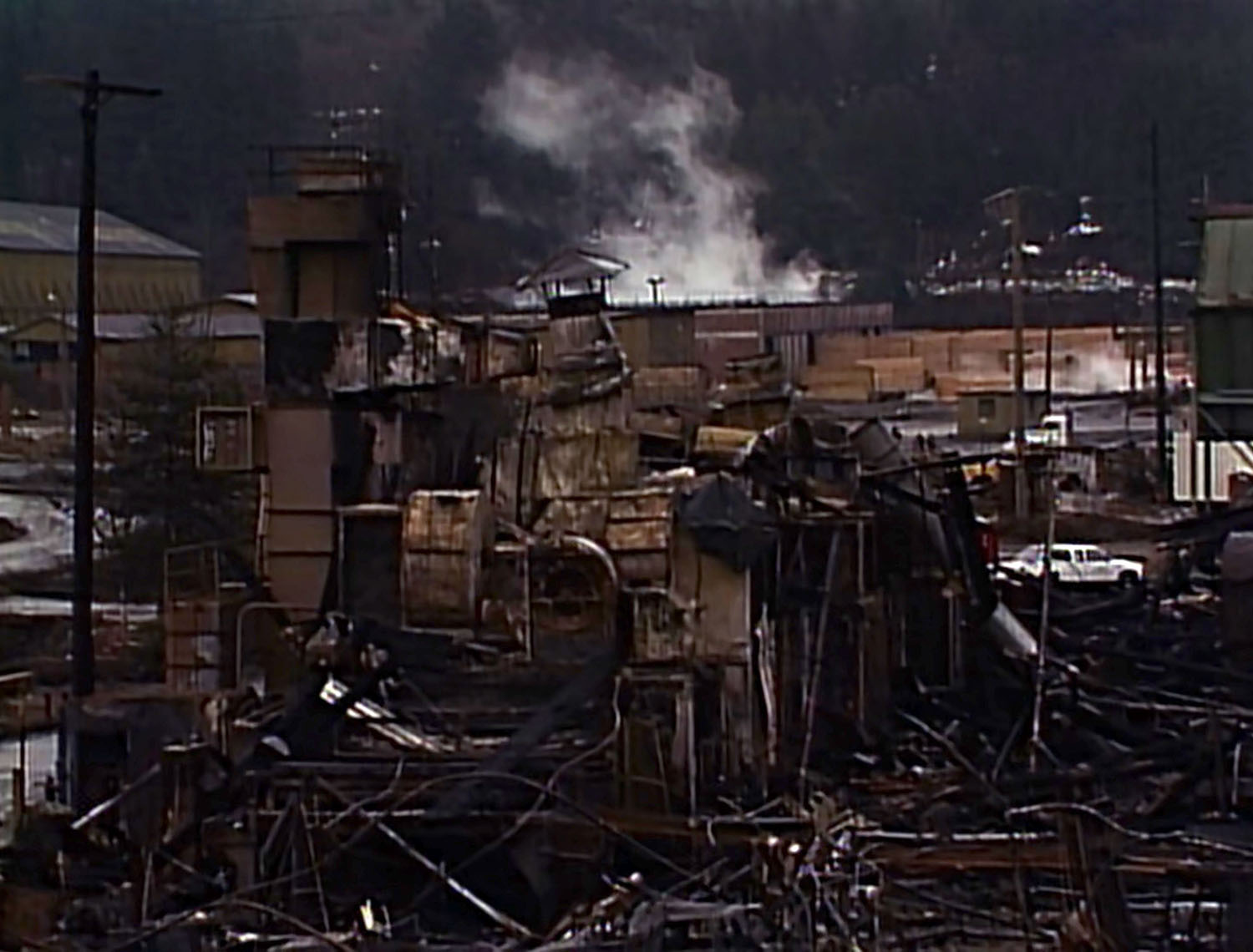


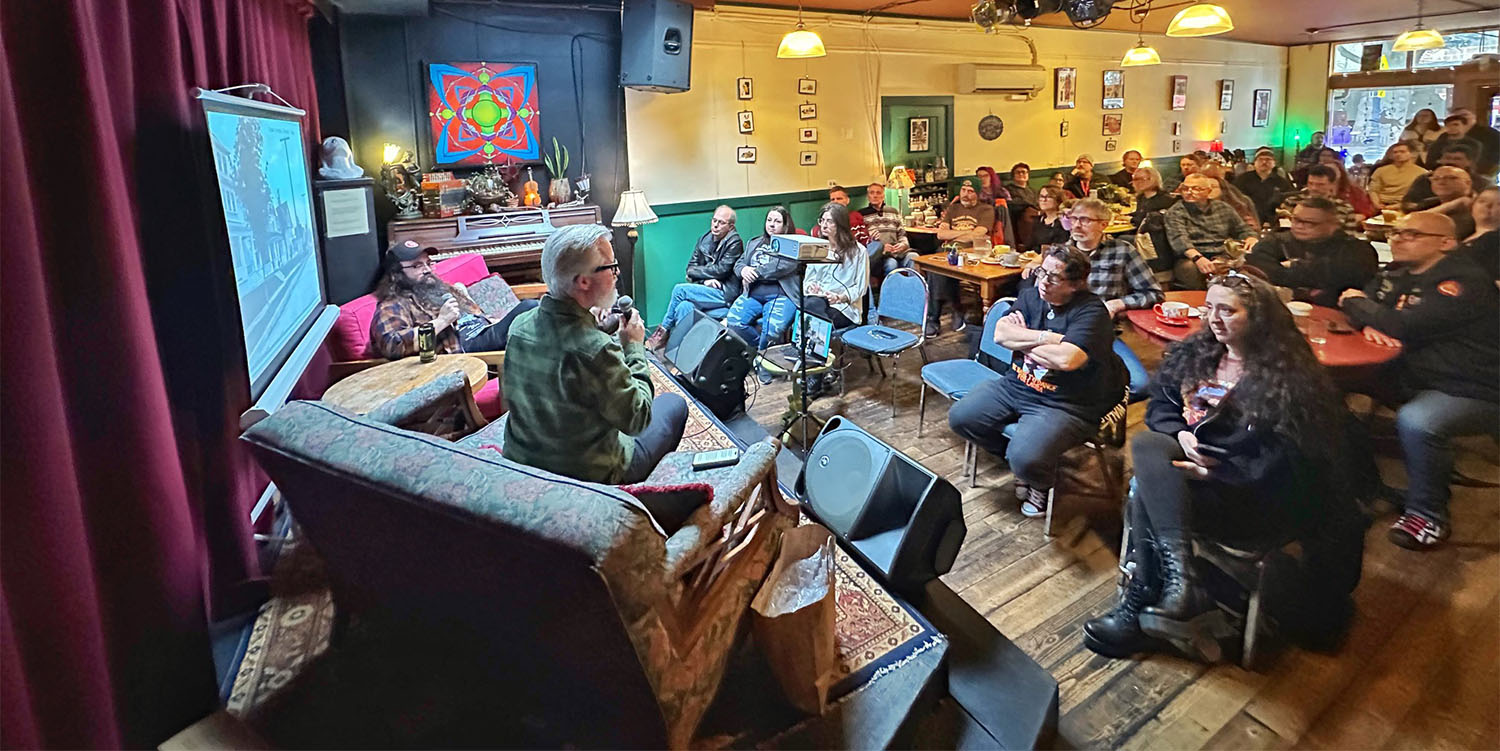
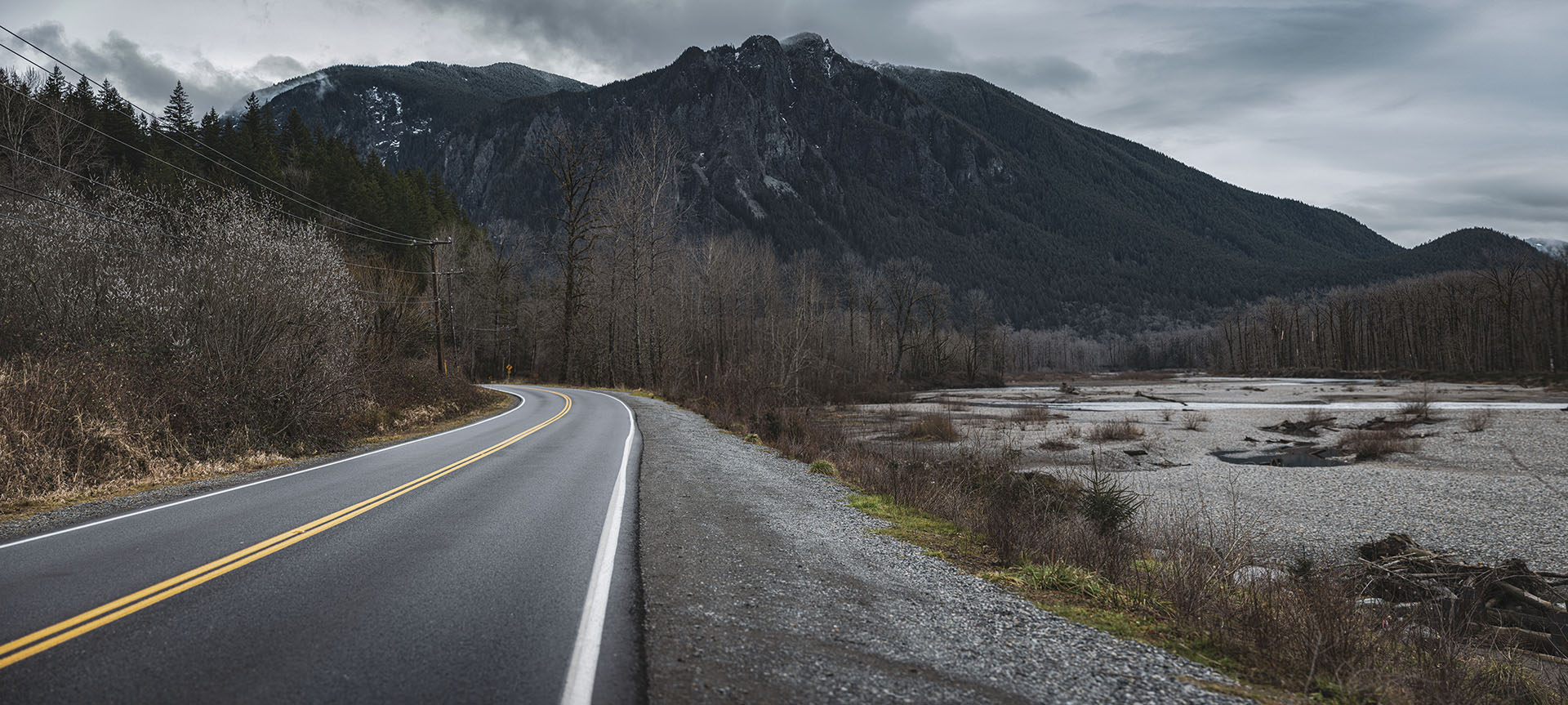
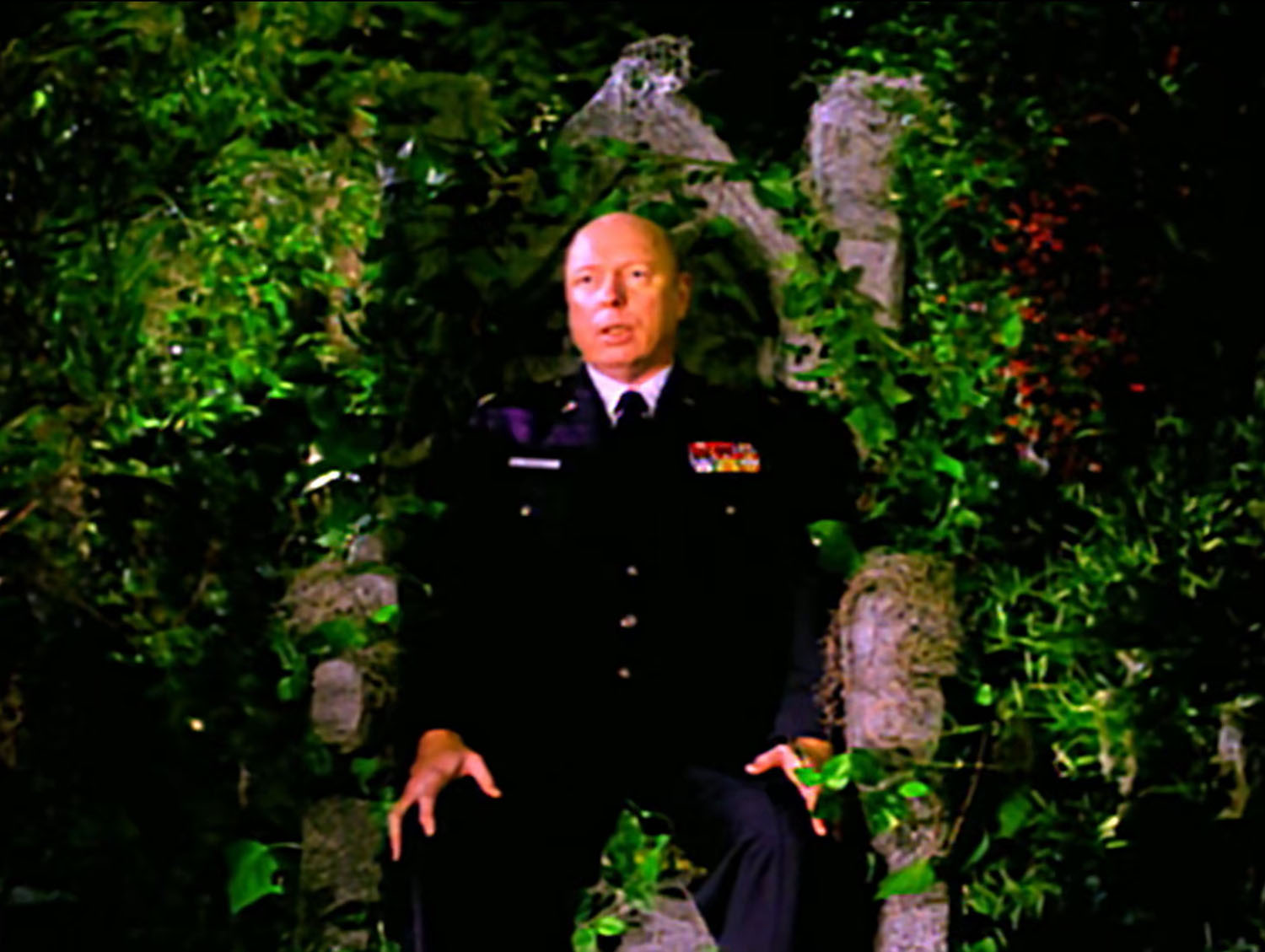
I’ve always wondered about this! Thanks for the research.
You’re welcome. I discovered about a year ago that the fire happened. I needed to find photos to match the story, and thankfully they were posted. I guess if I wait long enough, the answers will present themselves eventually.
Do you think this fire inspired them to add this element to the plot of the 1st season (Leo setting fire to the mill)?
It’s certainly a thought yet I’ve not found any reference in interviews that said the actual mill fire sparked the idea. I wonder if it was just one of those “happy accidents” Lynch is fond of finding.